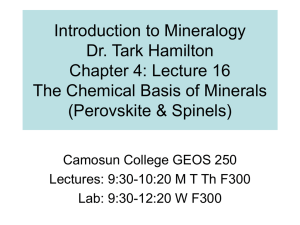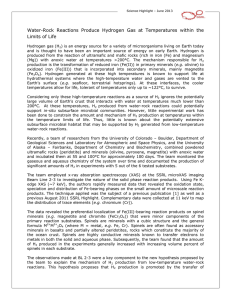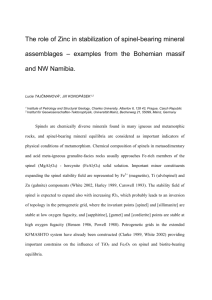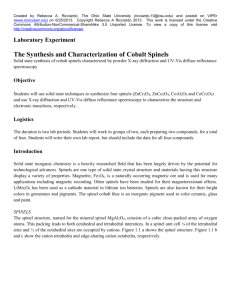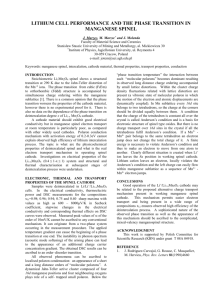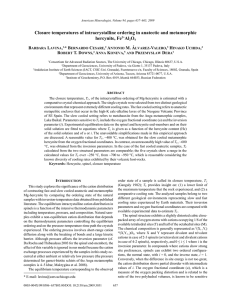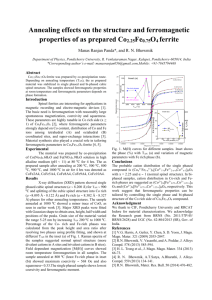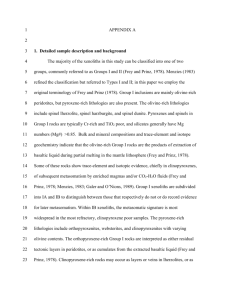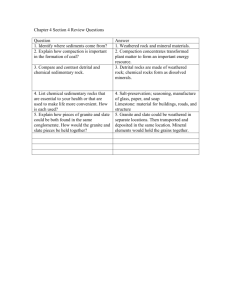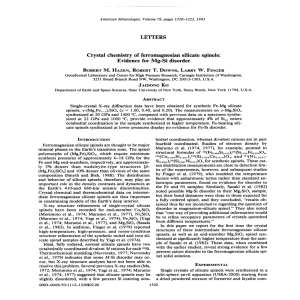References
advertisement
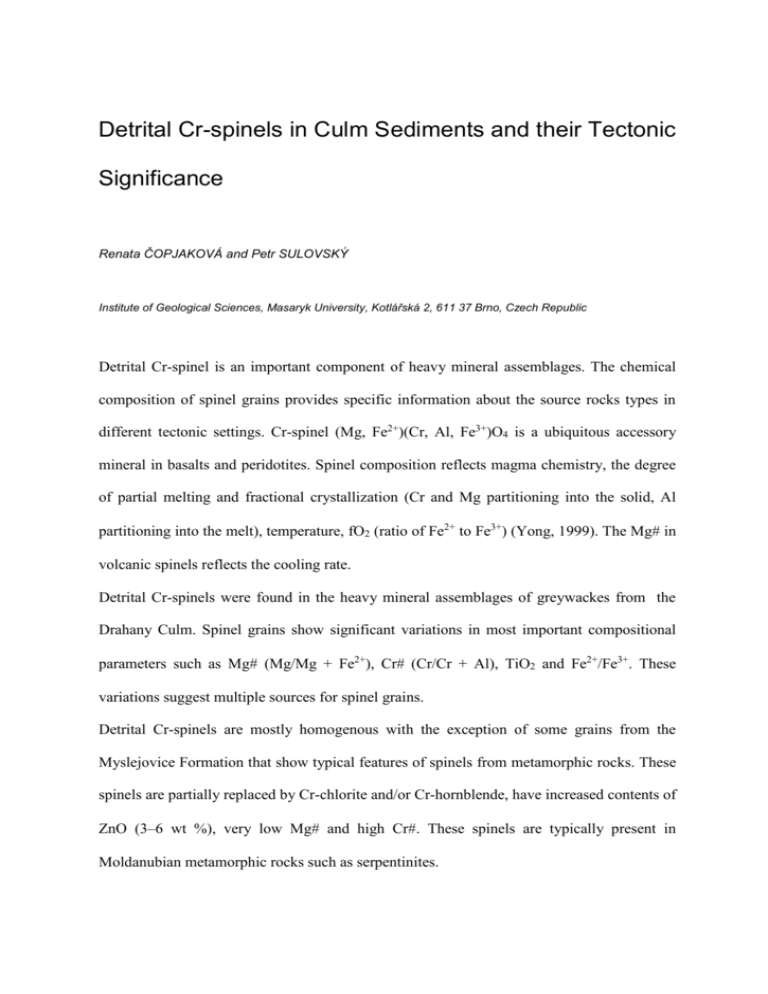
Detrital Cr-spinels in Culm Sediments and their Tectonic Significance Renata ČOPJAKOVÁ and Petr SULOVSKÝ Institute of Geological Sciences, Masaryk University, Kotlářská 2, 611 37 Brno, Czech Republic Detrital Cr-spinel is an important component of heavy mineral assemblages. The chemical composition of spinel grains provides specific information about the source rocks types in different tectonic settings. Cr-spinel (Mg, Fe2+)(Cr, Al, Fe3+)O4 is a ubiquitous accessory mineral in basalts and peridotites. Spinel composition reflects magma chemistry, the degree of partial melting and fractional crystallization (Cr and Mg partitioning into the solid, Al partitioning into the melt), temperature, fO2 (ratio of Fe2+ to Fe3+) (Yong, 1999). The Mg in volcanic spinels reflects the cooling rate. Detrital Cr-spinels were found in the heavy mineral assemblages of greywackes from the Drahany Culm. Spinel grains show significant variations in most important compositional parameters such as Mg (Mg/Mg + Fe2+), Cr (Cr/Cr + Al), TiO2 and Fe2+/Fe3+. These variations suggest multiple sources for spinel grains. Detrital Cr-spinels are mostly homogenous with the exception of some grains from the Myslejovice Formation that show typical features of spinels from metamorphic rocks. These spinels are partially replaced by Cr-chlorite and/or Cr-hornblende, have increased contents of ZnO (3–6 wt %), very low Mg and high Cr. These spinels are typically present in Moldanubian metamorphic rocks such as serpentinites. TiO2 content in conjuction with the Fe2+/Fe3+ ratio (Lenaz and Kamenetsky, 2000) were used as criteria to distinguish between volcanic and peridotitic spinel. The population in the Protivanov Formation is dominated by high-TiO2 and low-Fe2+/Fe3+ volcanic spinel. The proportion of volcanic spinel decreases toward the younger part of Culm sediments. This trend corresponds very well to the decreasing amount of volcanic pebbles in conglomerates from older to younger Culm sediments. Three types of volcanic spinels were distinguished using the classification diagrams of Kepezhinskas et al. (1993) and Kamenetsky et al. (2001). High Al2O3 (> 25 wt %) with Mg 0.5–0.7 and Cr 0.3–0.5 compositions plot well within the field of MORB or MORB-type back-arc spinels. Spinels with 16–23 wt % Al2O3, <1 wt % TiO2, Cr 0.5–0.7 and Mg 0.3–0.7 may be derived from subduction-related backarc basalts or continental tholeiites. One spinel grain with high TiO2 (1.5 wt %) fitted well into the field of spinels from ocean island basalts. The proportion of peridotite spinel with low TiO2 and high Fe2+/Fe3+ ratio increases toward the younger part of Culm sediments. A large portion of grains of peridotitic Cr-spinel yielded Cr of 0.4–0.55 and Mg 0.5–0.62. A comparison with the data on spinels from ultramafic rocks (Barnes and Roeder, 2001) indicates that the compositional range of the detrital spinels closely matches that of spinels from ocean-floor peridotites with affinity to Al-poorer harzburgites. Tomášková and Přichystal (1995) suggested that the source region for volcanic and magmatic pebbles was an island arc, denuded in the Lower Carboniferous. Our study of detrital spinels and their tectonic settings does not confirm that the material came from an island arc. This research was supported by the Grant Agency of the Czech Republic (grant project No. 205/99/0567) and by the FRVŠ of the Czech Republic (grant project No. 576/2003). References BARNES S.J. and ROEDER P.L., 2001. The range of spinel compositions in terrestrial mafic and ultramafic rocks. J. Petrol., 42: 2279-2302. KAMENETSKY V.S., CRAWFORD A.J. and MEFFRE S., 2001. Factors controlling chemistry of magmatic spinel: an empirical study of associated olivine, Cr-spinel and melt inclusions from primitive rocks. J. Petrol., 42: 655-671. KEPEZHINSKAS P.K., TAYLOR R.N. and TANAKA H., 1993. Geochemistry of plutonic spinels from the North Kamchatka Arc – Comparisons with spinels from other tectonic settings. Mineral. Mag., 57, 389: 575-590. LENAZ D. and KAMENETSKY V.S., 2000. Melt inclusions in detrital spinel from the SE Alps (Italy–Slovenia): a new approach to provenance studies of sedimentary basins. Contrib. Mineral. Petrol., 139: 748-758. TOMÁŠKOVÁ A. and PŘICHYSTAL A., 1995. Valouny vulkanitů z kulmských slepenců: pravděpodobná geotektonická pozice a možné zdrojové oblasti vulkanitů. Geol. Výzk. Mor. Slez. v R. 1994: 75-77. YONG I.L., 1999. Geotectonic significance of detrital chromian spinel: a review. Geosci. J., 3, 1: 23-29.
